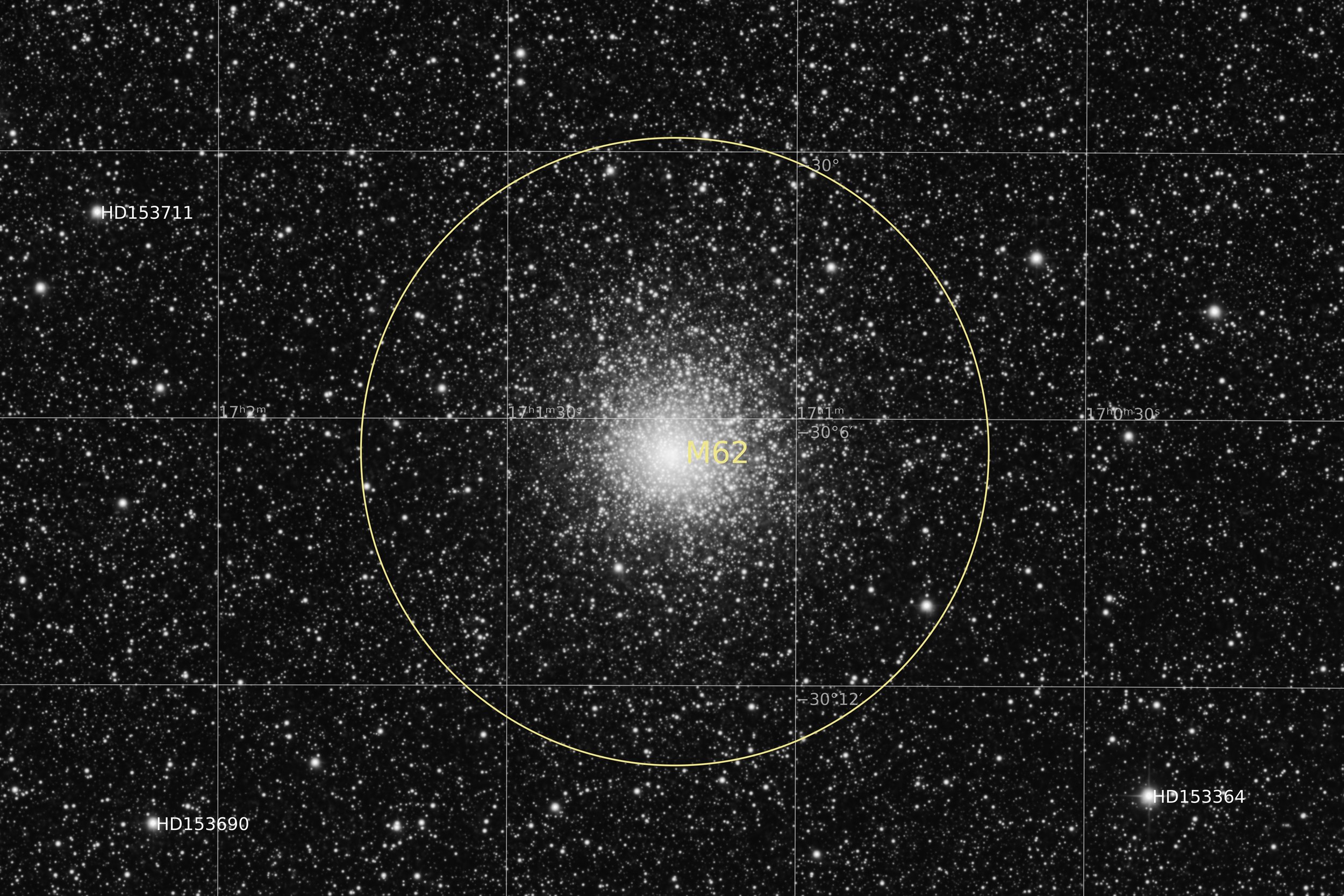M62
NGC 6266, Flickering Globular Cluster
30’ x 20’ | 0.3”/px | 6000 × 4000 px | full resolution
Ophiuchus
RA 17h 01m Dec -30° 06’ | 0°



Messier 62, also known as the Flickering Globular Cluster, is a globular cluster of stars in the south of the equatorial constellation of Ophiuchus. It was discovered in 1771 by Charles Messier, then added to his catalogue eight years later. M62 is about 21.5 thousand light years from Earth and 5,500 light years from the Galactic Center. It is among the ten most massive and luminous globular clusters in the Milky Way, showing an integrated absolute magnitude of −9.18. The cluster shows at least two distinct populations of stars, which most likely represent two separate episodes of star formation. Of the main sequence stars in the cluster, 79%±1% are from the first generation and 21%±1% from the second. The second is enriched by elements released by the first. In particular, abundances of helium, carbon, magnesium, aluminium, and sodium differ between these two. A 2010 study identified 245 variable stars in the cluster's field, of which 209 are RR Lyrae variables, four are Type II Cepheids, 25 are long period variables, and one is an eclipsing binary. The cluster may prove to be the galaxy's richest in terms of RR Lyrae variables. It is hypothesized that this cluster may be host to an intermediate mass black hole.
source: Wikipedia
Data Acquisition
Data was collected over 5 nights during the months of June 2025, using a 14” reflector telescope with full-frame camera at the remote observatory in Spain. Data was gathered using standard LRGB filters. Due to its low altitude, a lot of frames were rejected during processing. In fact, all frames from 04 June 2025 were rejected. A total of approximately 6 hours of data was finally combined to create the final image.
Location Remote hosting facility IC Astronomy in Oria, Spain (37°N 2°W)
Sessions
Frames
Equipment
Telescope
Mount
Camera
Filters
Guiding
Accessoires
Software
Planewave CDK14 (2563mm @ f/7.2), Optec Gemini Rotating focuser
10Micron GM2000HPS, custom pier
Moravian C3-61000 Pro (full frame), cooled to -10 ºC
Chroma 2” LRGB unmounted, Moravian filterwheel L, 7-position
Unguided
Compulab Tensor I-22, Dragonfly, Pegasus Ultimate Powerbox v2
Voyager Advanced, Viking, Mountwizzard4, Astroplanner, PixInsight 1.9.3
Processing
All processing was done in Pixsinsight unless stated otherwise. Default features were enhanced using scripts and tools from RC-Astro, SetiAstro, GraXpert, CosmicPhotons and others. Images were calibrated using 50 Darks, 50 Flats, and 50 Flat-Darks, registered and integrated using WeightedBatchPreProcessing (WBPP). The processing workflow diagram below outlines the steps taken to create the final image.
Processing of the image followed largely a standard processing workflow as is shown below, and is essentially identical to the process flow used earlier this week for processing M14.
Processing workflow (click to enlarge)
This image has been published on Astrobin.
